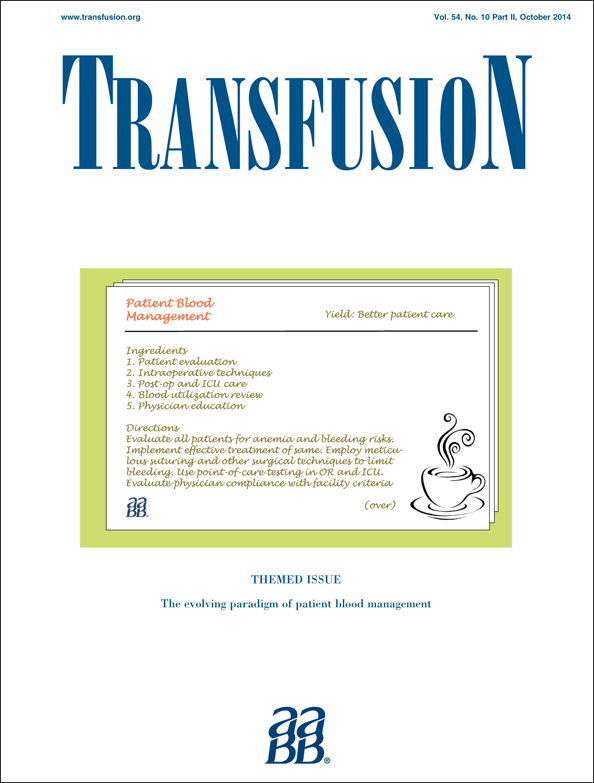Tolerance of intraoperative hemoglobin decrease during cardiac surgery
Abstract
Background
It has been suggested that a decrease of at least 50% from the preoperative hemoglobin (Hb) level during cardiac surgery is associated with adverse outcomes even if the absolute Hb level remains above the commonly used transfusion threshold of 7.0 g/dL. In this study the relation between intraoperative Hb decline of at least 50% and a composite endpoint was analyzed.
Study Design and Methods
This single-center study comprised 11,508 patients who underwent cardiac surgery and had normal preoperative Hb levels (12.0-16.0 g/dL in women, 13.0-18.0 g/dL in men) between January 2001 and December 2011. Logistic regression modeling was used. The composite endpoint comprised in-hospital mortality, stroke, myocardial infarction, and renal failure.
Results
Patients whose Hb did not decrease at least 50% and remained above 7 g/dL were used as reference (n = 9672). A total of 363 (3.2%) patients had an intraoperative Hb of less than 7 g/dL during surgery but a Hb decrease of less than 50%; 876 patients (7.4%) showed both a nadir Hb less than 7 g/dL and a Hb decrease of at least 50%, while 597 (5.2%) had a Hb decrease of at least 50% and a nadir Hb of at least 7 g/dL. In this last group the incidence of the composite endpoint was higher than in patients in the reference group (adjusted odds ratio, 1.27; 95% confidence interval, 1.14-1.41).
Conclusions
Our findings show that a decrease of at least 50% from baseline Hb during cardiac surgery is associated with adverse outcomes, even if the absolute Hb level remains higher than the commonly used transfusion threshold of 7.0 g/dL.




